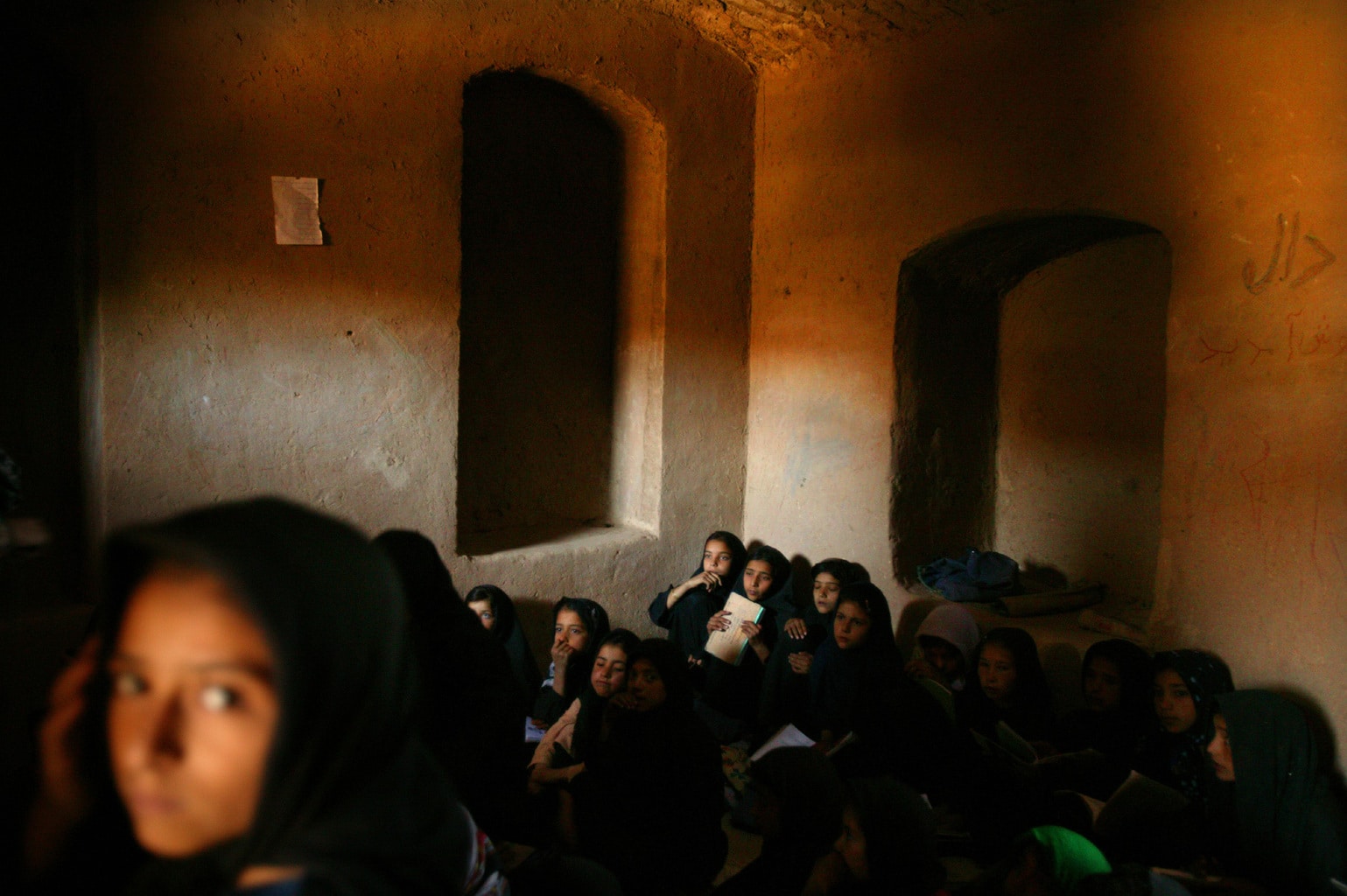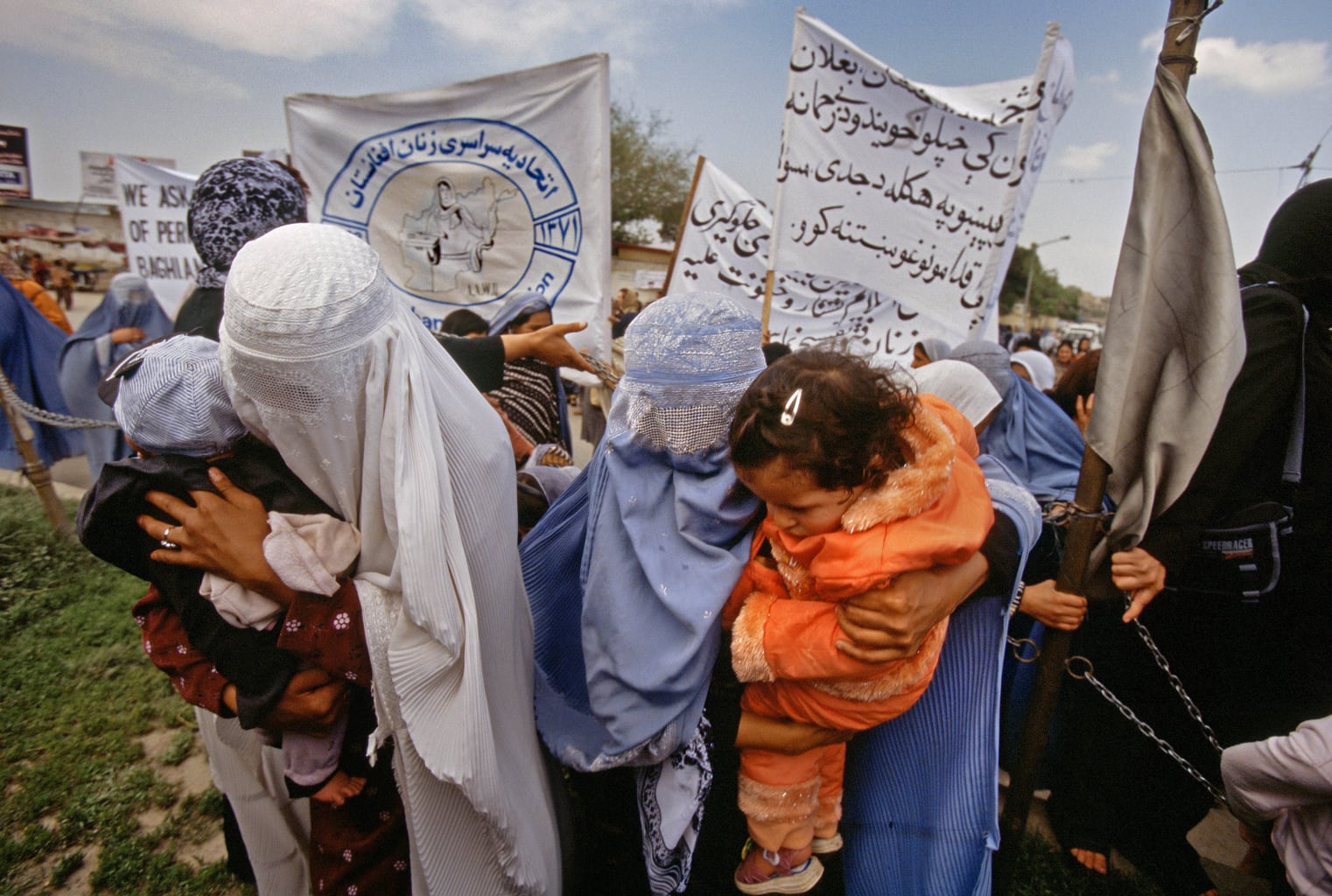Share
How Stephanie Sinclair’s Too Young To Wed Makes a Difference For Child Brides
We’re all familiar with powerful photojournalism. “Photography is and has always been an extraordinary tool to help move people. It inspires ac...

We’re all familiar with powerful photojournalism. “Photography is and has always been an extraordinary tool to help move people. It inspires actions and, though photos can certainly be manipulated, tells the truth in ways words may not,” says Stephanie Sinclair, photojournalist and the photographer behind Too Young To Wed (TYTW), a nonprofit devoted to empowering girls and ending child marriage globally.
But how can truth-telling through photography tangibly shape the lives of individuals? How is photography making a visible difference in global communities? Oftentimes, once a photo is published, we don’t know the impact of it outside of initial knee-jerk reactions.
Too Young To Wed seeks to push the power of photography and visual storytelling into making such actionable change. On the macro level, TYTW has educated billions of people about the consequences of child marriage through its extensive media coverage. But on a micro level, the organization has empowered survivors and their communities through photo workshops and leadership development to help girls reclaim their narratives. “We are excited to be part of the process, as these brave young girls become advocates themselves calling for world leaders to take action. It is something truly extraordinary to witness,” Stephanie says.
I spoke with Stephanie recently to find out more about her work with Too Young To Wed and to learn more about the role of photography in their organization, how PhotoShelter helps their efforts and more.
This interview has been lightly edited for clarity and length.
Cover image by Stephanie Sinclair. Caption: An 11-year-old girl in Ghor Province, Afghanistan sits beside her fiance, estimated to be in his 40s, at their engagement ceremony shortly before the couple’s marriage in 2005.
PhotoShelter: What’s the story behind Too Young To Wed? How did your work come about?
Stephanie Sinclair: Too Young to Wed began in Afghanistan. In 2003, I traveled to Herat, where I was working on a story about girls and women who set themselves on fire. There, I discovered a disturbing pattern among burn ward patients: most had been forced into marriage as children.
They told me they’d been married at 9, 10, 11—and in their misery they had preferred death over the lives they were living. The horror of learning their stories is really where the Too Young to Wed (TYTW) project began.
One girl every two seconds is forced into marriage globally, each day. The realization that child marriage was still so prevalent worldwide was shocking and inspired me to refocus my life on documenting and campaigning against the practice.
On October 11, 2012, the first International Day of the Girl Child, TYTW was officially launched, in conjunction with an exhibit at the United Nations. Since then, the organization has impacted thousands of girls directly through its programs and services. Statistics show that each girl who recovers or is prevented from child marriage will then prevent her own children from marrying early – a ripple effect that continues well beyond this generation.
The bravery of the girls willing to share their faces and stories, alongside profound images, has mobilized a movement. In Kagati Village in Nepal, where I conducted much of my reporting in 2007, for example, they raised their average age of marriage from 12 to 15. It’s not perfect, but a huge victory in a very short amount of time.
We witnessed firsthand the impact that visual evidence of human rights issues has in influencing change. Issues that might otherwise be too abstract or too distant to move people can suddenly become tangible and inescapable.
Stephanie Sinclair
In the summer of 2015, the United Nations adopted their first resolution to end child and forced marriage. The Human Rights Council unanimously adopted the resolution, co-sponsored by over 85 states, calling it a human rights violation and a form of violence. Child marriage has “wide-ranging and adverse consequences on the enjoyment of human rights, such as the right to education, the right to the highest attainable standard of health, including sexual and reproductive health.” It further recognized child marriage as a “barrier to sustainable development” that helps perpetuate the cycle of poverty.

What role does photography play in your organization?
SS: Using world-class photojournalism, TYTW strives to break through the noise and stop people as they scroll. We know and understand the power of photography. None of the stories we tell would have the same impact without the power of visual storytelling. Particularly now as photos and video clips are so easy to share, the story of one girl can cross the globe overnight.
In fact, through our powerful storytelling, TYTW has educated the world about the consequences of child marriage by securing media coverage in esteemed outlets such as The New York Times and National Geographic. We have decades-long relationships with these respected media partners, which help us distribute the stories of child brides globally. Through these partnerships, we have reached billions of viewers in the last 15 years. Through our media reach and exhibition campaigns, more than 9.7 million individuals have been educated about the child marriage crisis in Nepal. Photographs made by the girls during a workshop in Kenya earned more than 6 billion views globally after publication in top tier media outlets.
Many of the photos I’ve seen show incredible access to these communities. How are you able to cover such a sensitive issue so intimately?
SS: Stories like these demand time and cultivation of relationships and trust. It takes time for families to bring you close, and to understand your intentions and goals when making photographs to share with the world. It calls for respect, communication, and conversation. The intimacy comes from the deeper relationship I’ve developed with the amazing and brave people I’ve had the opportunity to photograph. I’ve remained in touch with many of them through the years, watched their children grow and supported many of their communities.
How do you handle consent for photographs with child brides?
SS: As is common with most photography concerning minors, consent is given by the child’s legal guardian, in addition to his or her personal consent.
How does PhotoShelter help support TYTW? How do you use your account?
SS: PhotoShelter generously supports TYTW’s Emerging Photographers Fellowship program as a sponsor, and provides complementary coverage of high-resolution image storage account fees for both Fellows, as well as for TYTW’s organization account and my professional account. This highly selected Fellowship Program invests in a new generation of visual storytellers whose original reporting covers issues of gender-based violence against women and girls. The program empowers each grantee to hone their craft, nurture their prolificacy, and advance the global body of original documentation and thought leadership on ending violence against women and girls. It’s an honor to be part of their journey and we are grateful for the suite of support these emerging photographers are given, including from PhotoShelter.
You’ve been covered by some major publications—The New York Times, National Geographic, The Washington Post. Do you have any pitching advice for other photographers working on their own personal projects or advocacy work?
SS: My relationship with editors has developed over more than two decades in the profession. They know that I’ve always strived to give them the most authentic images I was capable of creating, centering the voices of the girls and sharing their stories with a unique depth and heart. In return they trust the stories I pitch.

Are there opportunities for other photographers to get involved with TYTW? If so, how?
SS: We often hire photographers to photograph our programs. So if there are people interested in photographing in the countries we work in, feel free to reach out. Also, we are always open to volunteers for mentoring and helping with our Tehani Photo Workshops.
What does the future of TYTW look like?
SS: We will continue to educate and empower girls everywhere while working to end child and forced marriage. We are big believers in journalism and know that change comes from allowing the public to connect and care for these girls, which we will do through continued visual storytelling. Because the causes of child marriage are exacerbated by issues of food insecurity, poverty, war and climate disruption, we also continue to report on these issues and support programs that help alleviate the problem. For example, we are launching a large-scale food and livelihood program in Afghanistan and we are teaching girls coding and financial literacy skills through a savings program in Kenya, to name just a few.
To learn more about Too Young To Wed visit http://www.tooyoungtowed.org/ or follow them on Instagram @tooyoungtowed.


